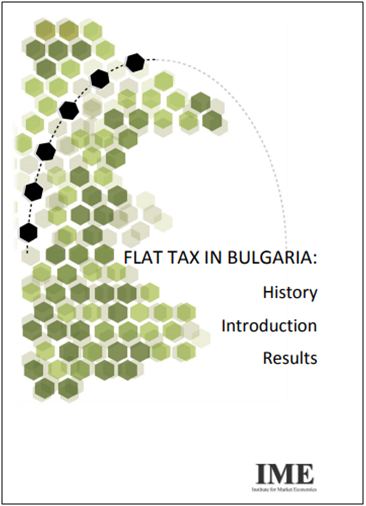In 2007-2008, a single rate for income and profit tax of 10% (or “flat rate”) was introduced in Bulgaria. It is now apparent that this was only the last stage of a long-lasting tax reform which has been going on without interruption under numerous and fundamentally different governments for over a decade and a half.
Each step of the reforms during that period was based on pragmatic considerations connected with lowering the share of the grey economy, raising tax collection, and encouragement of investment, economic growth, and the labor market.
For the same pragmatic considerations, each individual step of the reform was relatively small and usually limited to a single tax bracket in order to avoid risks for tax revenue and to guarantee a positive budget balance.
Though very slow, this approach to tax reform has proved exceptionally successful and sustainable precisely because it was based on rationality and pragmatism.
For the IME publishing a book on proportional tax is not a new idea. The presented essay collection is not aimed at claiming authorship on the 10% flat tax. It does include, though, texts by some of the people who were direct participants in the process of preparing, providing arguments in support of, and implementing the reform. Efforts, which, as becomes clear from the book, span over 10 years. It is this historical perspective that makes it possible to highlight the flat tax as a logical and natural result of a comprehensive change in the country’s taxation and social insurance model. Introducing the flat rate was by no means accidental. On the contrary, on the eve of the change itself, the idea was seen as acceptable by most people and enjoyed solid support from both society at large and the expert community; that support eventually found its political expression. It would not be an exaggeration to say (following Georgi Ganev) that this tax reform is an example of macro-institutional change for which it took our society years to mature.
A decade has passed since the first ‘pillar’ of flat tax was introduced: the flat profit tax of 10% in 2007, followed by the flat 10% income tax in 2008. From today’s perspective it becomes easy to separate the truth from the myths and present the results of the reform the way they are. The present edition offers both first person narratives about tax changes after 1989 along the path to the flat rate and several different views on its effect in our country: on disposable income, tax revenue, formal employment or welfare. It is these effects that allow us to call the flat tax a successful reform: one of the few in our country to have found international recognition.




